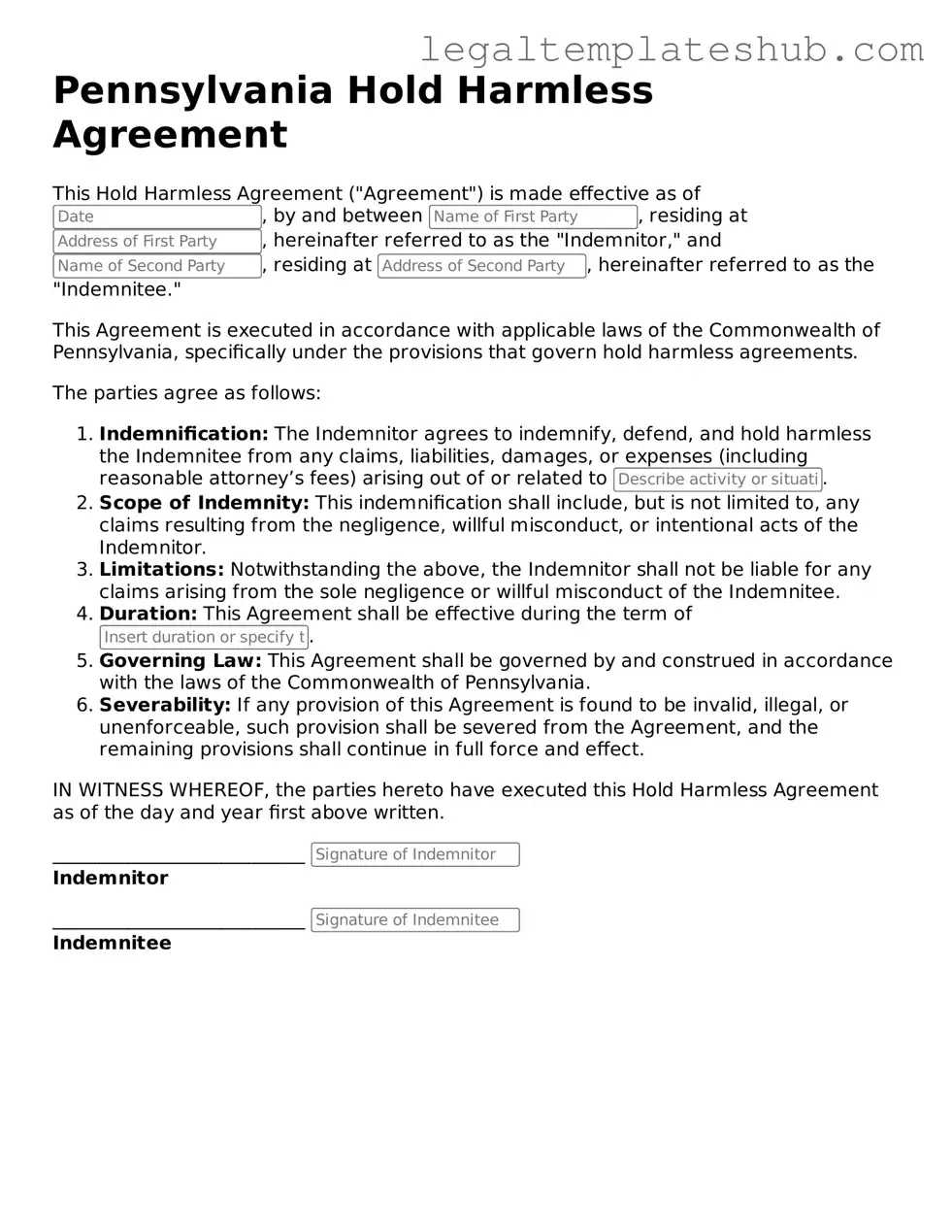Instructions on Filling in Pennsylvania Hold Harmless Agreement
Filling out the Pennsylvania Hold Harmless Agreement form is an important step in ensuring that all parties involved understand their responsibilities and liabilities. Once you have the form in front of you, you can begin the process of completing it accurately. Follow these steps to ensure that you fill it out correctly.
- Start by entering the date at the top of the form. This helps establish when the agreement was created.
- Next, provide the name of the party that is being held harmless. This is usually an individual or organization.
- In the following section, write your name or the name of the party that is agreeing to the hold harmless clause. Make sure this matches the name on any identification you provide.
- Clearly describe the activity or event that is covered by this agreement. Be specific to avoid any confusion later on.
- In the designated area, outline any specific risks associated with the activity. This ensures that all parties are aware of potential dangers.
- Next, include any additional terms or conditions that may apply. This could involve limitations on liability or other important details.
- Both parties must sign the form. Make sure to date the signatures to indicate when the agreement was finalized.
- Finally, keep a copy of the completed form for your records. It’s always a good idea to have documentation on hand.
After filling out the form, review it carefully to ensure all information is accurate and complete. This will help prevent any misunderstandings in the future. Once everything is in order, you can proceed with the activity or event as planned.
